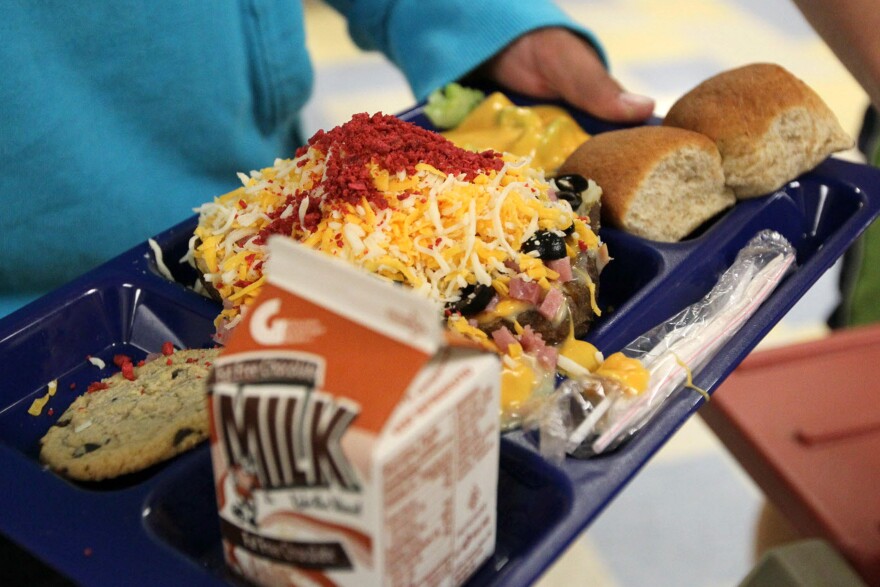Stan Siegwald, the director of strategic initiatives for Dare to Care, points to a poster on his wall that maps the organization’s areas of distribution.
“Dare to Care serves 13 counties -- it’s greater Louisville really,” he says. “About 65 percent of the population we serve lives in Metro Louisville.”
When you cover that much ground, Siegwald says, you are dealing with a lot of food.
“Dare to Care, last year, distributed enough food to provide nearly 19 million meals,” Siegwald says.
Again, that’s a lot of food.
But even then, Jefferson County, where the majority of Dare to Care’s service population lives, has one of the highest rates of food insecurity in the state.This is according to data from Feeding America’s “Map the Meal Gap” study.
So what’s the solution? Well, Jefferson County is a big area, so digging deeper into the data seems like a good place to start.
Earlier this year, Dare to Care and the Greater Louisville Project -- an independent, research-focused nonprofit -- partnered up to compare data from GLP’s 2016 concentrated poverty map with the areas where Dare to Care distributes food.
According to Ben Reno-Weber, project director for GLP, this is a move that can help ensure the specific areas in Jefferson County that most need services are receiving adequate assistance.
“The most interesting piece is that it’s not really just about an entire neighborhood,” Reno-Weber says. “There’s really micro-pockets of extremely concentrated poverty in our community.”
According to GLP’s 2016 study -- which examined US.. census track data -- this includes parts of the Portland and Russell neighborhoods.
“This isn’t just, ‘oh, it’s the West End, it’s ‘oh, this particular area,’” Reno-Weber says. “And that I think enables us to both focus our efforts much more clearly and to recognize that there’s a lot of assets to build on across our community.”
Dare to Care works with over 200 partners across the state -- places like community centers, after-school programs and churches -- to distribute meals.
By identifying the areas with the highest levels of poverty, they can assure that those partners are receiving the amount of food they need to effectively fight hunger in the neighborhoods that need it most.
“I think the overall vision is how we go from reactive spending to proactive investment,” Reno-Weber says. “I really think Dare to Care is really helping us get some vision for that.”
But according to Siegwald and Reno-Weber, the utilization of this data goes beyond addressing food insecurity.
“People that are in that situation, it’s a public health issue,” Siegwald says. “We know that people that receive food assistance from Dare to Care are more likely to suffer heart disease when they come to us, they are more likely to have issues with diabetes.”
For that reason, Reno-Weber envisions Dare to Care’s use of their numbers inspiring other partnerships between other social services.
“You don’t show up at a food bank needing food if everything is going right in your life,” he says. “Chances are really good that you need someone to help support your family in breaking the cycle of poverty that led you there in the first place.”

